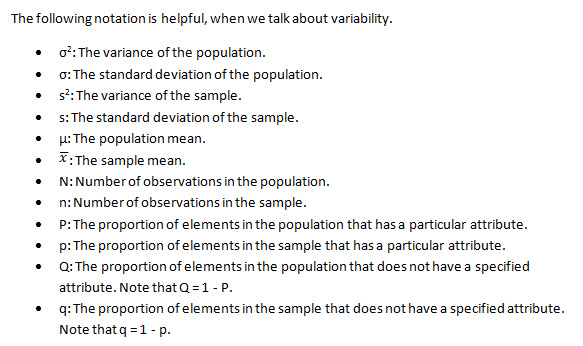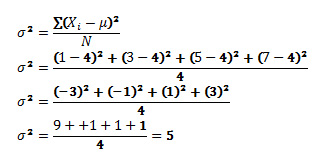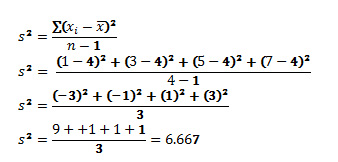Some parameters attempt to describe the amount of variation between random variables. For example, consider a population of four random variables {2, 2 ,2, 2}. Here, each of the random variables are equal, so there is no variation. The set {3, 5, 5, 7}, on the other hand, has some variation since some random variables are different.
Notation

Note that capital letters refer to population parameters, and lower-case letters refer to sample statistics.
The Range
The range is the simplest measure of variation. It is difference between the biggest and smallest random variable.
Range = Maximum value - Minimum value
Therefore, the range of the four random variables (3, 5, 5, 7} would be 7 - 3 or 4.
Variance of a Random Variable
It is important to distinguish between the variance of a population and the variance of a sample. They have different notation, and they are computed differently. The variance of a population is denoted by σ2; and the variance of a sample, by s2.
The variance of a random variable is the average squared deviation from the population mean, as defined by the following formula:

where σ2 is the population variance, μ is the population mean, Xi is the ith element from the population, and N is the number of elements in the population.
The variance of a sample is defined by slightly different formula:

 where s2 is the sample variance, is the sample mean, xi is the ith element from the sample, and n is the number of elements in the sample. Using this formula, the sample variance can be considered an unbiased estimate to the true population variance. Therefore, if you need to estimate the unknown population variance, based on known data from a sample, this is the formula to use.
where s2 is the sample variance, is the sample mean, xi is the ith element from the sample, and n is the number of elements in the sample. Using this formula, the sample variance can be considered an unbiased estimate to the true population variance. Therefore, if you need to estimate the unknown population variance, based on known data from a sample, this is the formula to use.
Example: A population consists of four observations: {1, 3, 5, 7}. What is the variance?
Solution: First, we need to compute the population mean.

Then we plug all of the known values in to formula for the variance of a population, as shown below:

Example: A sample consists of four observations: {1, 3, 5, 7}. What is the variance?
Solution: This problem is handled exactly like the previous problem, except that we use the formula for calculating sample variance, rather than the formula for calculating population variance.
